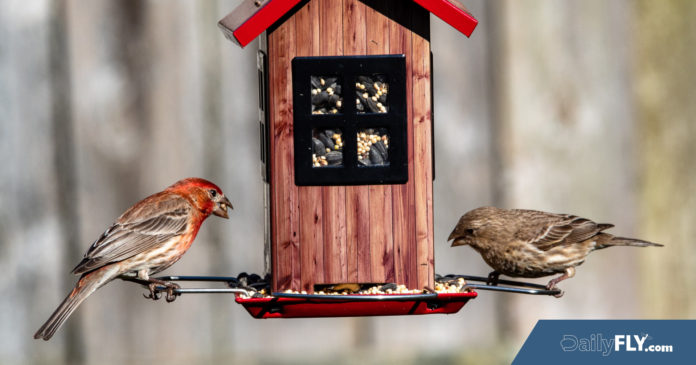SPOKANE – Recent reports of sick or dead birds at backyard feeders in King, Kitsap, Skagit, Snohomish, and Thurston counties is prompting the Washington Department of Fish and Wildlife (WDFW) to recommend that people temporarily discontinue feeding wild birds or take extra steps to maintain their feeders.
The current die-off of finches- such as pine siskins- as well as other songbirds, is attributed to salmonellosis, a common and usually fatal bird disease caused by the salmonella bacteria, according to WDFW veterinarian Kristin Mansfield.
“When birds flock together in large numbers at feeders, they can transmit the disease through droppings and saliva,” said Mansfield.
The spread of the disease this winter could be exacerbated by what appears to be an “irruption” of winter-roaming finches- an anomaly where finches and other species that generally winter in the boreal forest in Canada and the far north move south and are spotted in areas in larger numbers than non-irruption years. (More information on irruption is available from the Audubon Society website.)
“The first indication of the disease for bird watchers to look for is often a seemingly tame bird on or near a feeder. The birds become very lethargic, fluff out their feathers, and are easy to approach. This kind of behavior is generally uncommon to birds,” Mansfield said. “Unfortunately, at this point there is very little people can do to treat them. The best course it to leave the birds alone.”
Members of the public can help to stop the spread of salmonellosis by discontinuing backyard bird feeding until at least February, to encourage birds to disperse and forage naturally.
“Birds use natural food sources year-round, even while also using backyard bird feeders, so they should be fine without the feeders,” Mansfield said.
Those who choose not to discontinue wild bird feeding are encouraged to clean feeders daily by first rinsing the feeder well with warm soapy water, then dunking in a solution of nine parts water and one part bleach. Finish by rinsing and drying before refilling. Keep the ground below the feeder clean by raking or shoveling up feces and seed casings.
People are also asked to reduce the number of feeders they offer to a quantity they will be able to maintain with daily cleanings, use feeders that accommodate fewer birds (such as tubes rather than platforms), and spread out feeder locations. Keeping bird baths and fountains clean is also important.
It is possible, although uncommon, for salmonella bacteria to transfer from birds to humans through direct contact with infected birds, droppings, or through domestic cats that catch sick birds. When handling birds, bird feeders or bird baths, it is best to wear gloves and wash hands thoroughly afterward.
WDFW is asking members of the public to report dead birds that they observe online, and asks the public to avoid handling them if possible.
The Washington Department of Fish and Wildlife is the primary state agency tasked with preserving, protecting and perpetuating fish and wildlife and ecosystems, while providing sustainable fishing and hunting opportunities.
388
|
|
Credit: Source link































